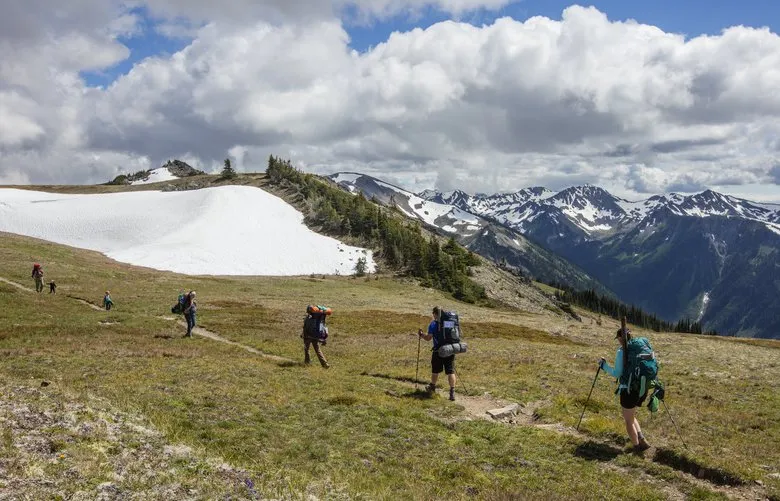Introduction
In a rare and unnerving encounter, a 4 foot predator killed by a hiker has become the talk of the wilderness survival community. Hiking, a serene activity that allows people to connect with nature, occasionally comes with risks. This particular incident is a startling reminder that even smaller predators can pose threats to humans in the wild. In this blog, we’ll dive into the details of this incident, what led to the encounter, and how it unfolded, as well as discuss the important lessons hikers and outdoor enthusiasts can learn from this experience.
The Incident: What Happened?

The story begins with an experienced hiker, enjoying a routine trek through the dense forest trails of a remote national park. As the hiker made their way along the path, they encountered something unusual: a 4 foot predator lurking in the underbrush. This predator, although smaller than the large carnivores one might expect, was still capable of causing harm.
After assessing the situation, the hiker made a quick decision to defend themselves, resulting in the 4 foot predator killed by hiker. The hiker’s instincts and knowledge of wildlife played a key role in their survival, but this event also raises important questions about wildlife safety and preparedness in outdoor environments.
Understanding the 4 Foot Predator
While many people associate predators with large, fearsome creatures like bears or mountain lions, not all predators fit this mold. The 4 foot predator killed by hiker in this case was likely a wild animal commonly found in forested regions, such as a coyote or a wildcat. These smaller predators are often underestimated, but they can be extremely dangerous, especially if they feel threatened or if their natural habitat is disturbed.
Coyotes, for instance, are highly adaptable and can thrive in both rural and urban environments. Wildcats, including bobcats, are agile hunters with sharp claws and teeth. Despite their relatively small size, these animals can become aggressive when cornered, hungry, or when defending their territory. In this particular incident, the 4 foot predator killed by hiker was likely acting out of instinct rather than malice, reminding us that animals in the wild are unpredictable and driven by survival.
How the Hiker Reacted
The hiker’s response to the predator was swift and decisive. Equipped with basic survival tools and a strong understanding of wildlife behavior, they were able to fend off the attack. In the moment, the hiker made the difficult decision to kill the predator in self-defense. While it’s important to respect wildlife, survival situations demand immediate action, and in this case, it led to the 4 foot predator killed by hiker.
The encounter could have ended very differently if the hiker had not been prepared. Basic hiking safety measures, such as carrying a multi-tool, staying aware of one’s surroundings, and knowing how to react to wildlife, were all crucial in this situation. It’s also a reminder that no matter how peaceful a trail may seem, potential threats can arise when least expected.
Lessons for Hikers: How to Stay Safe in the Wild

- Know Your Surroundings One of the most important lessons to take away from this story is the importance of staying aware of your surroundings. While hiking, it’s easy to become engrossed in the beauty of nature, but always remain vigilant. Predators can blend into their environments, and being caught off guard can lead to dangerous situations. In the case of the 4 foot predator killed by hiker, the hiker’s keen observation likely saved their life.
- Carry Essential Gear Having the right equipment is essential when venturing into the wilderness. Basic tools such as a knife, a whistle, pepper spray, or even a walking stick can make a huge difference in a survival situation. The hiker in this case was able to protect themselves and take quick action when they encountered the predator. In addition to defensive tools, always carry a first-aid kit, water, and navigation equipment like a compass or GPS.
- Understand Wildlife Behavior Each type of predator behaves differently when encountering humans. It’s important to understand the animals that inhabit the area you are hiking in. For example, coyotes are known to be cautious but may become bold if habituated to humans, while bobcats are generally elusive but can be unpredictable when hunting. The hiker’s knowledge of predator behavior in this situation was a crucial factor in the 4 foot predator killed by hiker story.
- Remain Calm in Dangerous Situations Panic can lead to poor decisions in dangerous situations. One of the reasons the hiker survived the attack was their ability to remain calm and make quick decisions. When faced with a predator, it’s important to assess the situation calmly, whether that means slowly backing away, making yourself appear larger, or, in extreme cases, defending yourself.
- Report All Encounters Any encounter with wildlife, especially a predator, should be reported to park authorities or local wildlife management. This helps authorities track animal behavior, determine if certain areas are at higher risk, and ensure the safety of future hikers. After the 4 foot predator killed by hiker, the incident was reported, which allowed authorities to take appropriate measures to protect both humans and wildlife in the area.
The Environmental Impact of Predator Encounters
While the 4 foot predator killed by hiker story emphasizes survival, it’s important to recognize the role of predators in maintaining ecological balance. Predators, regardless of their size, play a key role in controlling prey populations and ensuring biodiversity within ecosystems. When incidents like this occur, they highlight the delicate balance between human activity and wildlife preservation.
Hikers and outdoor enthusiasts should strive to respect wildlife habitats and minimize their impact on natural environments. Simple actions like staying on designated trails, avoiding feeding wildlife, and securing food and waste can help reduce the risk of predator encounters and ensure that animals remain within their natural habitats.
Conclusion
The 4 foot predator killed by hiker incident is a stark reminder of the unpredictability of the wilderness. While smaller predators may not seem as threatening as their larger counterparts, they can still pose serious dangers, especially when they feel threatened or desperate. The hiker’s quick thinking and preparedness in this case undoubtedly saved their life, but it also teaches us valuable lessons about respecting wildlife and staying safe in outdoor environments.
For anyone planning to venture into the wild, remember the lessons from this story: stay alert, carry the right tools, understand the local wildlife, and above all, remain calm in the face of danger. While the wilderness offers beauty and serenity, it’s also home to predators, big and small. By taking the proper precautions, you can enjoy nature safely and responsibly, reducing the likelihood of a similar encounter.
